If you’re growing cannabis, you know that the flowering stage is very important to the quality of your final product. This is when your plants will start to produce buds, and you want to make sure they have everything they need to thrive.
One of the most important things you can do for your plants during the flowering stage is to feed them the right fertilizer. Flowering cannabis fertilizers are specifically designed to provide the nutrients that your plants need to produce big, dense, and terpy flowers.
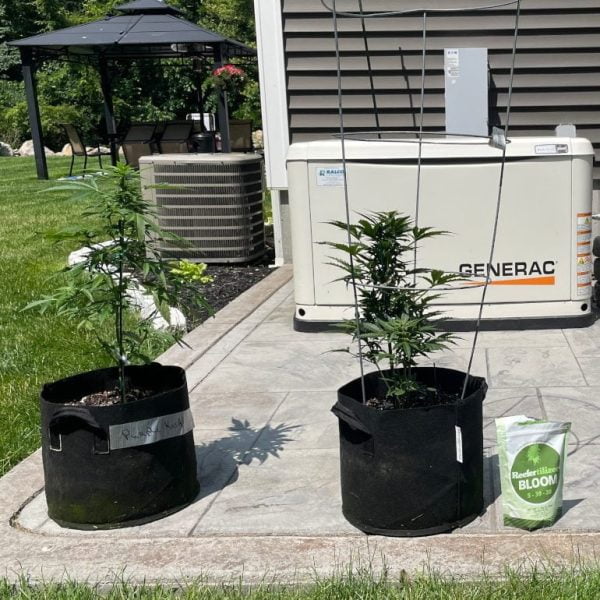
In this article, I’m going to explain what flowering cannabis fertilizer is, why it’s important to feed flowering cannabis plants, and what the nutritional needs of cannabis plants are during the flowering stage.
What is flowering cannabis fertilizer?
Flowering cannabis fertilizer is a type of fertilizer that is specifically designed to provide the nutrients that cannabis plants need during the flowering stage. This type of fertilizer typically has a high phosphorus and potassium content, as these nutrients are essential for flower development.
What NPK fertilizer should I use on flowering plants?
An NPK ratio that is high in phosphorus and potassium but lower in nitrogen. The NPK is just a ratio so the value of the numbers is less important. Higher numbers usually mean it is more concentrated. For example, Reefertilizer Bloom is a synthetic fertilizer with an NPK of 5-30-20, and organic fertilizer with an NPK of 1-6-4 is the same ratio and would also be good for flowers.
Why is it important to feed flowering cannabis plants?
Fertilizing your plants during the flowering stage is important because it helps them to produce big, dense flowers. Without the right nutrients, your plants may not produce as many flowers, or the flowers may be small and underdeveloped.
What are the nutritional needs of cannabis plants during the flowering stage?
The nutritional needs of cannabis plants during the flowering stage vary depending on the cultivar and the growing environment. However, in general, cannabis plants need a high phosphorus and potassium content during the flowering stage.
What to feed weed during the flowering stage?
The weed fertilizer at the flowering stage should contain the following macronutrients:
- Phosphorus: Phosphorus is essential for flower development. It helps the plant to produce strong stems and branches, as well as large, resinous flowers.
- Potassium: Potassium is also essential for flower development. It helps the plant to regulate water balance and photosynthesis, as well as produce strong stems and branches.
- Nitrogen: Nitrogen is still important during the flowering stage, but it is not as important as phosphorus and potassium. Nitrogen helps the plant to produce new growth, but too much nitrogen can lead to problems such leaf burn.
Week 1-2 of Flowering
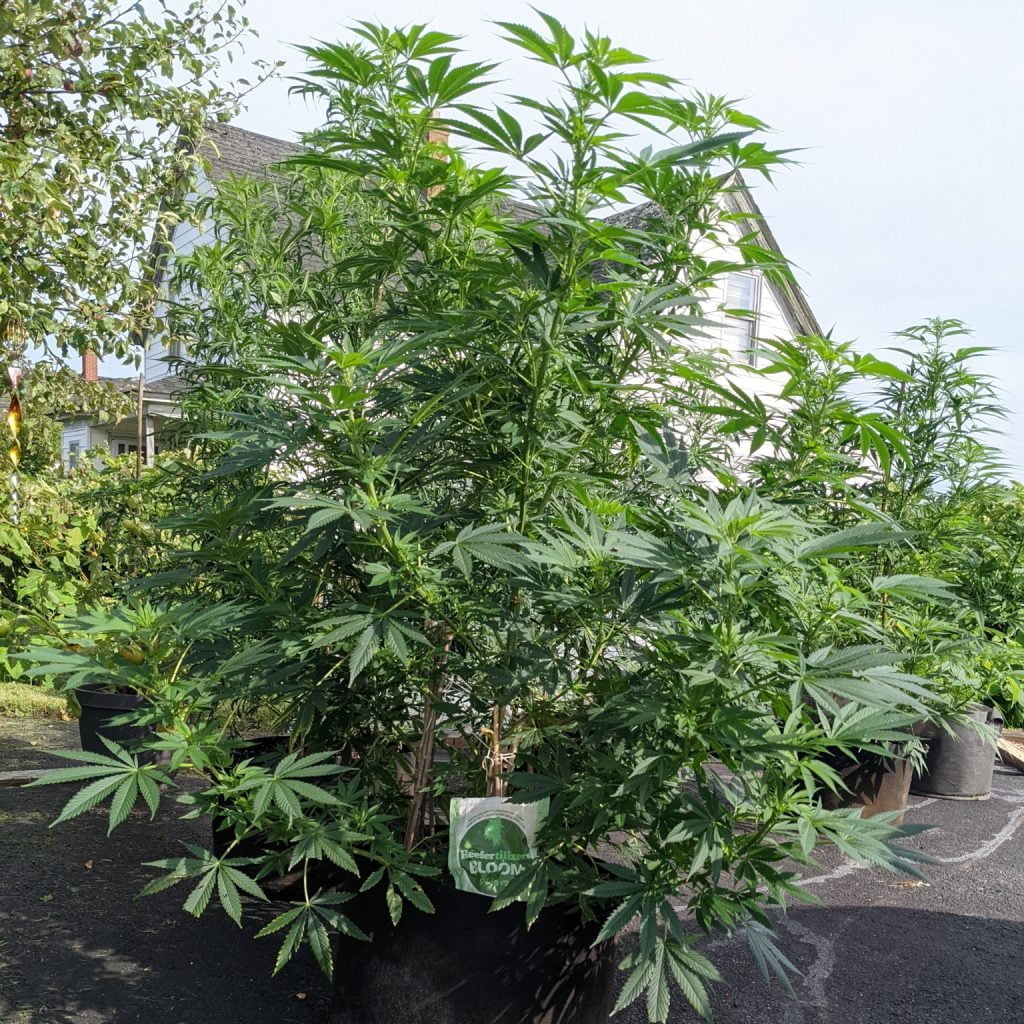
The plant is still in the early stages of flowering, so its nutritional needs are similar to those of the vegetative stage. However, the plant will start to require more phosphorus and potassium, as these nutrients are essential for flower development.
You can start feeding your plants a flowering fertilizer at this stage. A good flowering fertilizer will have a high phosphorus and potassium content, with a lower nitrogen content.
The amount of fertilizer you need to feed your plants will depend on the size of your plants and the type of fertilizer you are using. Be sure to follow the instructions on the fertilizer packaging carefully.
During weeks 1-2 of flowering, you should also pay attention to the following:
- Light: The plant will need more light during the flowering stage. If you are growing indoors, you may need to increase the amount of light your plants are receiving.
- Water: The plant will need more water during the flowering stage. Be sure to water your plants regularly, but do not overwater them.
- Temperature: The plant will prefer a slightly cooler temperature during the flowering stage. A temperature around 70-75 degrees Fahrenheit (21°C-23°C) is ideal.
- Humidity: The plant will prefer a slightly lower humidity during the flowering stage. A humidity of around 50-60% is ideal.
Best Practices
Here are some best practices for week 1-2 of flowering:
- Start feeding your plants a flowering fertilizer. A good flowering fertilizer will have a high phosphorus and potassium content, with a lower nitrogen content.
- Increase the amount of light your plants are receiving. If you are growing indoors, you may need to increase the light intensity or the number of hours of light your plants are receiving.
- Water your plants regularly, but don’t overwater them. Overwatering can lead to root rot and other problems.
- Monitor and track your plants closely. Pay attention to their growth and development, and make sure they are not showing any signs of nutrient deficiencies or pests, or diseases.
- Keep your grow space clean and free of debris. This will help to prevent the spread of pests and diseases.
If you are growing cannabis outdoors read our blog on the best nutrients for outdoor growth.
Week 3-4 of Flowering
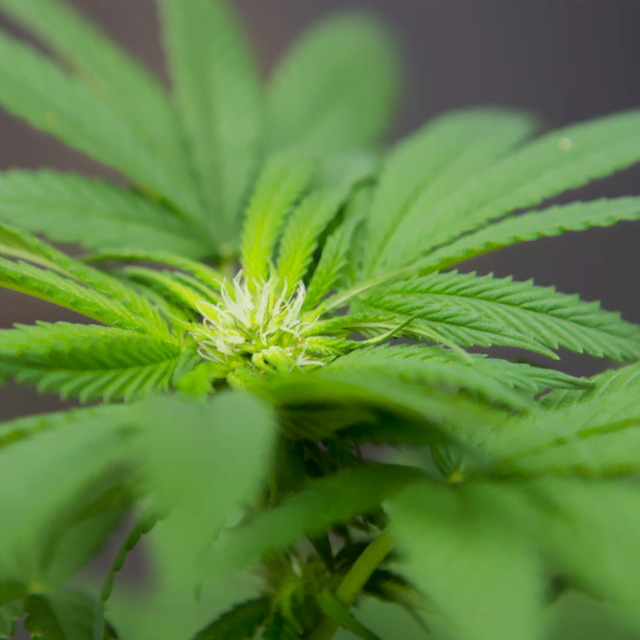
The plant is now in the early to mid-flowering stage. Its nutritional needs will continue to increase, and it will require more phosphorus and potassium than ever before. You should be feeding your plants a flowering fertilizer at full strength at this point.
During this stage, the plant will start to produce pistils (the female reproductive organs) and trichomes (the resinous glands that produce the cannabinoids and terpenes). The plant will also start to develop its buds.
To help your plants thrive during this stage, you should focus on providing them with the following:
- Potassium: Potassium is essential for flower development and bud growth. It helps to regulate the plant’s water uptake and transport, and it also helps to strengthen the plant’s stems and branches.
- Phosphorus: Phosphorus is essential for flower development and bud growth. It helps to produce energy for the plant, and it also helps to regulate the plant’s metabolism.
- Nitrogen: Nitrogen is still important during this stage, but it is not as important as phosphorus and potassium. Nitrogen helps to promote vegetative growth, so you should reduce the amount of nitrogen you are feeding your plants.
Best Practices
Sure, here are some best practices specifically for weeks 3-4 of flowering cannabis plants:
- Continue feeding your plants a flowering fertilizer. The plant will need more phosphorus and potassium during this stage, so you may need to increase the strength of the fertilizer.
- Monitor the pistils. The pistils are the female reproductive organs of the plant, and they will start to turn from white to orange or brown during the flowering stage.
- Check the trichomes. Trichomes hold many cannabinoids and terpenes. The trichomes will start to turn from cloudy to amber during this stage. The amber trichomes are when the THC content is at its peak, but at this point, many will still be clear.
- Keep an eye out for mold. The cooler temperatures and increased moisture in late flowers can create a perfect environment for mold growth. Make sure to provide your plants with adequate ventilation and airflow to help prevent mold.
- Defoliate your plants. This will help to improve airflow and reduce the risk of mold growth.
Beware of the smell. Your plants might be very fragrant and they’re only going to get stronger. If your growing indoors a carbon air filter can be very helpful. Growing outdoors, strong flowers like lilac can help mask the smell.
Reefertilizer Bloom is a high-quality fertilizer for the flowering stage that is specifically designed to help your plants produce big, dense flowers. Reefertilizer Bloom has a high ratio of phosphorus and potassium, which are the two nutrients that are essential for flower development. It also provides micronutrients such as calcium and magnesium, which are common deficiencies and are proven to increase bud size and help terpene production.

Week 5-6 of Flowering
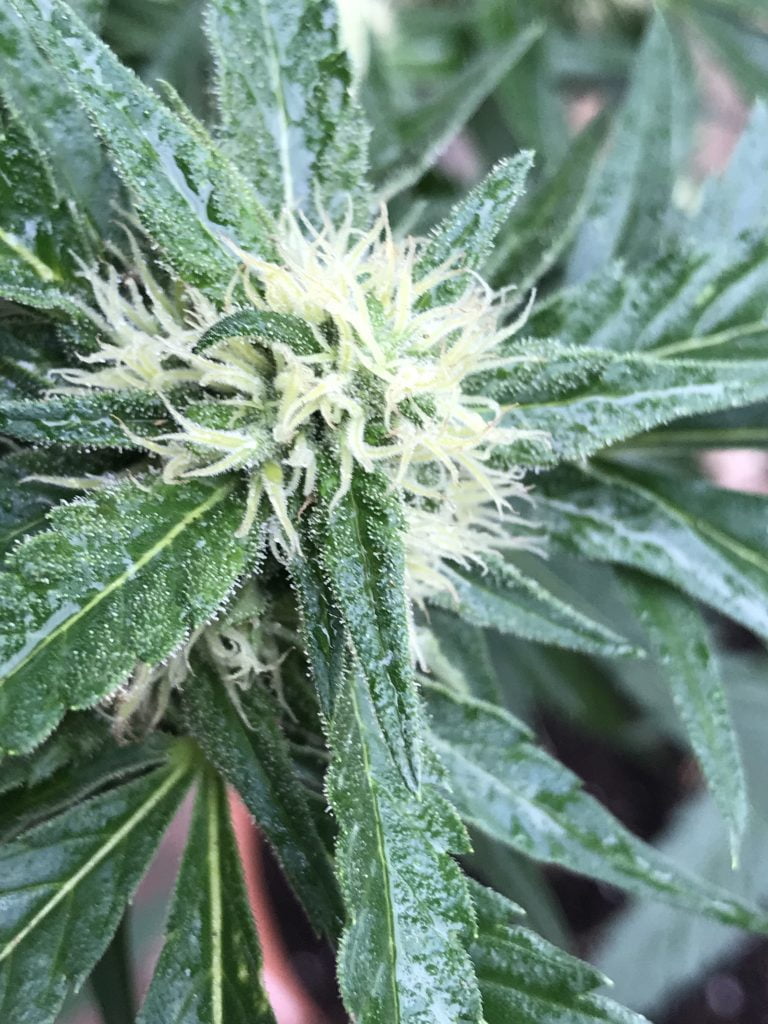
The plant is now in the mid-to-late flowering stage. Its nutritional needs won’t taper off, as the plant is now focused on producing flowers. You can continue feeding your plants a flowering fertilizer.
During this stage, the plant will continue to develop its buds. The buds will start to swell and fill out, and the trichomes will start to mature.
To help your plants thrive during this stage, you should focus on providing them with the following:
- Potassium: Potassium is still essential for flower development and bud growth. It helps to regulate the plant’s water uptake and transport, and it also helps to strengthen the plant’s stems and branches.
- Phosphorus: Phosphorus is still important during this stage, but it is not as important as potassium. Phosphorus helps to produce energy for the plant, and it also helps to regulate the plant’s metabolism.
- Nitrogen: Nitrogen is not as important during this stage, so you can reduce the amount of nitrogen you are feeding your plants.
You can feed your plants a flowering fertilizer at half-strength during this stage. Be sure to follow the instructions on the fertilizer label carefully.
Best Practices
Best Practices for Week 5-6 of Flowering Cannabis Plants:
Feeding:
- Peak flowering time: Week 5 and 6 are critical for maximizing flower development, so closely monitor your plants during this period.
- Nutrient balance: Check for signs of nutrient deficiencies or overfeeding. Adjust nutrient levels accordingly for optimal growth.
- Increased calcium: Flowering plants have higher demands for calcium, which is essential for strong cell walls and overall plant health.
Stress:
- Avoid stress: Minimize any stress factors to prevent stunting bud growth or triggering hermaphroditism.
- Hermaphroditism risk: Stress can cause female plants to produce pollen and self-pollinate as a last-ditch effort to reproduce before the end of their life cycle.
- Avoid light leaks: If you’re growing photoperiod plants indoors it’s very important that the plants are getting 12 hours of complete darkness every day. A small amount of light can mess with your plant’s sense of time and trigger it to go back to it vegetative stage.
Support:
- Provide support: Fresh cannabis flowers can become quite heavy, potentially causing branches to bend or break. Use bamboo stakes, strings, or plant clips to keep plants upright and support heavy buds.
- Prevent tumbling: Proper support prevents plants from falling over, which can damage flowers and affect overall yield.
Humidity and Temperature:
- Maintain humidity: Keep humidity levels between 30–40% to prevent issues with mold or pests that thrive in high-humidity environments.
- Daytime temperature: Maintain daytime temperatures at a maximum of 25°C to ensure optimal flower development.
- Nighttime temperature: Keep nighttime temperatures around 16–17°C to create a favorable environment for flowering cannabis plants.
Week 7-8 of Flowering
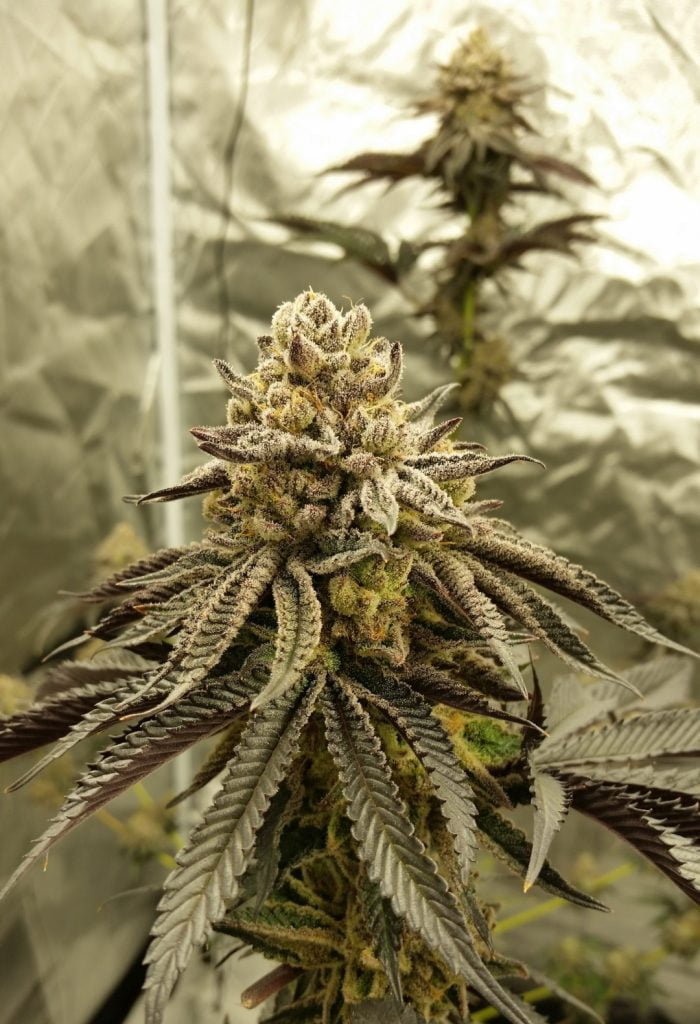
The plant is now in the late-flowering stage. Its nutritional needs are still high, as the plant is now focused on ripening its flowers. You can make the decision on whether or not you want to flush the plants before harvest.
However, it is important to keep an eye out for any nutrient deficiencies that may occur during this stage. Some common nutrient deficiencies that can occur during the flowering stage include:
- Magnesium: Magnesium is a key nutrient for photosynthesis, and a deficiency can lead to yellowing leaves and stunted growth. It is also involved in the production of chlorophyll, which is necessary for plants to absorb sunlight. Its deficiency can lead to yellowing leaves and stunted growth.
- Calcium: Calcium is important for cell wall development, and a deficiency can lead to bud rot and other problems. It is also involved in the transmission of signals between cells.
- Boron: Boron is important for cell division, and a deficiency can lead to stunted growth and deformed flowers. It is also involved in the transport of nutrients within the plant.
- Copper: Copper is important for enzyme function, and a deficiency can lead to stunted growth and poor flowering. It is also involved in the production of melanin, which gives plants their color.
- Iron: Iron is important for chlorophyll production, and a deficiency can lead to yellowing leaves. It is also involved in the production of energy within the plant.
- Manganese: Manganese is important for photosynthesis, and a deficiency can lead to yellowing leaves and stunted growth. It is also involved in the production of antioxidants, which protect plants from damage.
- Zinc: Zinc is important for enzyme function, and a deficiency can lead to stunted growth and poor flowering. It is also involved in the production of proteins, which are essential for plant growth.
If you suspect that your plants may have a nutrient deficiency, you can test the soil or leaves to determine the levels of nutrients present. When you’re this late in the game it might not be that important to try and cure every deficiency you see. This late in the plant’s lifecycle it will begin using up nutrients in older leaves and begin shedding those leaves. This is totally normal for a cannabis plant.
Best Practices
Nutrient Flush
- Timing: Initiate the nutrient flush two weeks before your planned harvest date to remove excess nutrients from the soil.
- Flushing benefits: Flushing improves the overall taste, aroma, and smoothness of the final product, as well as reducing the risk of harsh, chemical flavors. Some folks believe the difference is minimal.
Humidity
- Maintain low humidity: Keep humidity levels between 30–40% to minimize the risk of mold and pests during the final stages of flowering.
- Proper ventilation: Ensure proper air circulation in the growing area to prevent moisture buildup and potential mold issues.
Bud Maturity
- Observing trichomes: Continuously monitor your plants during the two-week flush period. Use a magnifying glass to check the trichomes (resin glands) on the buds.
- Trichome method: Harvest when trichomes appear cloudy or milky and some are amber. This indicates peak cannabinoid content for the desired potency.
48–72 Hours of Darkness (Optional)
- Darkness before harvest: Consider implementing a 48–72 hour period of complete darkness just before harvest.
- Increased trichome production: Some growers believe this technique can stimulate the plant to produce more trichomes, leading to potentially more potent weed.
- Monitor carefully: Be cautious with this method as it can be stressful for the plant, and its effectiveness might vary depending on cultivar and growing conditions.
Tips for Growers During the Flowering Stage

Keep an Eye Out for Mold in Late Flower
- Outdoor growers especially need to be vigilant during the late flowering stage. Cooler temperatures and increased moisture during this period can create an ideal environment for mold growth on cannabis plants.
- Regularly inspect your plants for any signs of mold, such as fuzzy, white, or gray spots on the buds or leaves.
- Promptly address any mold issues to prevent it from spreading to other parts of the plant and compromising the final harvest.
Read more about a fungal growth that can ruin your entire plant without you noticing in outdoor cannabis plants.
Ensure Adequate Ventilation and Airflow
- Proper ventilation is crucial in preventing mold and maintaining healthy plants during the flowering stage.
- Outdoor growers should choose a location with good air circulation and avoid areas prone to excessive moisture accumulation.
- For indoor growers, use fans to create airflow within the growing space, ensuring fresh air reaches all parts of the plants, including the lower canopy.
- Adequate ventilation not only helps prevent mold but also strengthens the plant’s structure, reducing the risk of mold-friendly dense, humid microclimates.
Control Humidity Levels
- Keep humidity levels in check, especially during late flower, to minimize the risk of mold development.
- Maintain humidity between 30–40% to discourage mold growth and pest infestations.
- Regularly monitor humidity using a hygrometer and adjust environmental conditions as needed to stay within the ideal range.
- Maintaining proper humidity also promotes resin production and healthy trichomes, contributing to higher-quality buds.
Prune and Defoliate Strategically
- Pruning and defoliation can help improve airflow and light penetration throughout the plant.
- Pruning smallt skinny branches near the base of your plant will help provide more energy to your best bud sites on the sunnier side of the plant.
- Remove any large, shaded fan leaves to allow more light to reach lower bud sites.
- Pruning excessive foliage also reduces the chances of trapped moisture and increases ventilation within the plant canopy. Don’t go overboard as too much defoliation can stunt growth.
Prevent Waterlogged Soil
- Overwatering can lead to waterlogged soil and create an environment conducive to mold growth and root rot.
- Allow the soil to dry out slightly between watering sessions, ensuring the plant receives adequate moisture without becoming waterlogged.
- Use a well-draining growing medium and pots with proper drainage holes to prevent excess water retention.
Click here to get the 5 best and proven tips for growing cannabis outdoors.
Once your plants have finished flowering, you can harvest them and enjoy the fruits of your labor!
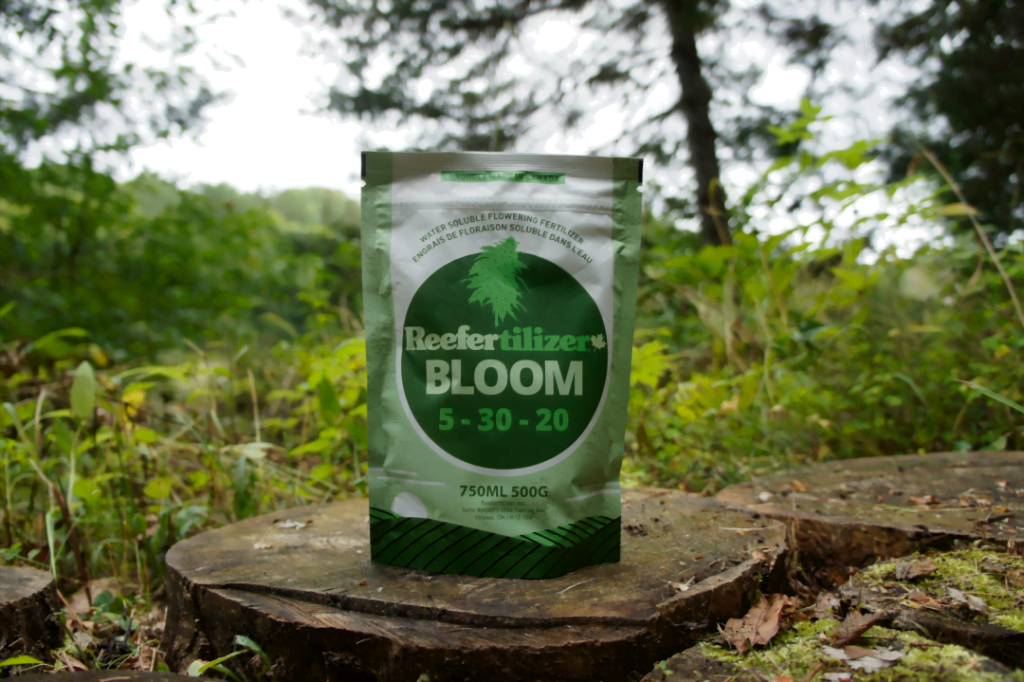
If you want to get the most out of your cannabis plants, then you need to be feeding them Reefertilizer Bloom.
How to Feed Your Plants Reefertilizer Bloom
Reefertilizer Bloom is a high-quality flowering fertilizer that is designed to help your plants produce big, dense flowers. It is a dry powder fertilizer that is easy to mix with water.
To feed your plants, Reefertilizer Bloom, simply follow these steps:
- Mix the recommended amount of Reefertilizer Bloom with water in a clean container.
- Water your plants as usual.
You can feed your plants, Reefertilizer Bloom, every time you water them during the flowering stage. The frequency of feeding may vary depending on the size and type of your plants.
Start feeding your plants Reefertilizer Bloom when you switch lights to 12/12 or when preflowers appear.
Flower Weeks 1-3 | 1 scoop mixed into 4L of water |
Flower Weeks 4-8 | 2 scoops mixed into 4L of water |
Additional Flower Weeks | 2 scoops mixed into 4L of water |
1-2 weeks before harvest | Flush plants with plain water |
Feeding “Reefertilizer Bloom – flowering cannabis fertilizer” is essential for helping your plants produce big, dense flowers. Reefertilizer Bloom is a high-quality flowering fertilizer that is designed to help your plants reach their full potential. It is easy to use and provides all the nutrients your plants need to produce a bountiful harvest.
Here are some additional benefits of using Reefertilizer Bloom:
- It is made with chelated nutrients that are immediately available to plants
- It is safe for both plants and the environment when used as directed.
- It is easy to use and measure.
- It is affordable.
If you want to learn even more about growing good cannabis, we offer a free 40+ page guide full of images.
Now available on Amazon.
Sign up for our newsletter and download the digital copy today!
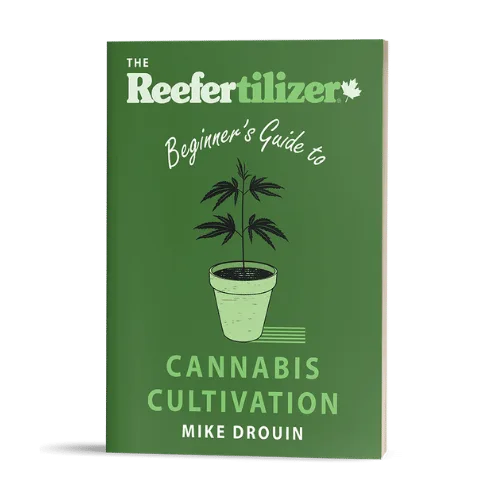
This guide will answer many questions about growing cannabis, like the following...
Selecting Seeds
Identify and Correct Problems
Maximize Yield
Much More...
Get a Chance to INSTANTLY WIN a Reefertilizer Nutrient Kit When You Sign Up.
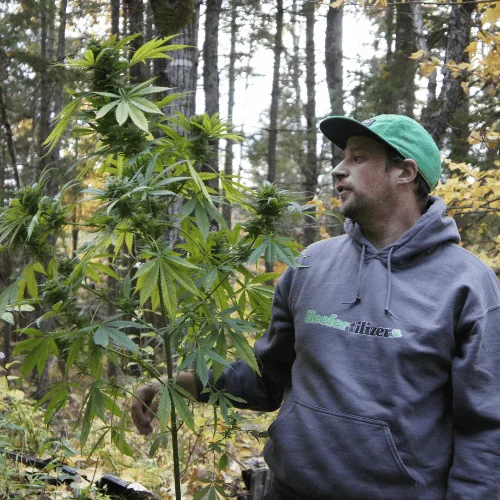
Mike Drouin is the co-founder of Reefertilizer. He’s an experienced craft cannabis grower and a writer of many articles regarding the process. Mike lives on Vancouver Island and enjoys cycling and camping and will sometimes combine the two.
